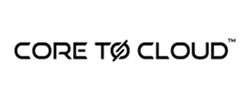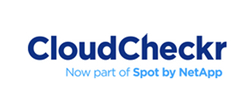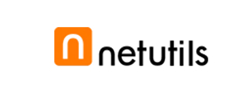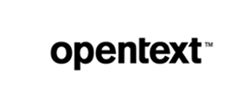Monday, January 01, 2024 by Shelley Hirst
As a vendor with a channel model, one way or another you'll be helping to fund partners to promote your brand and drive sales. Usually through a formal MDF programme or informal funding from sales and marketing budgets
The same is true for distribution, with the added complication they sit in the middle managing multiple vendors and a partner channel and need to show value to all parties.
It’s nothing new and has been the bedrock of channel enablement over decades. The principle makes perfect sense - pass funding through the channel to leverage existing relationships with customers and create net new conversations with prospects. What's changed is the way buyers engage and we say these models need to adapt if ROI is to be fully achieved.
Managing Expectations
With every new quarter expectations are high, with participants supercharged and motivated. But what about the data gathered in the last quarter by the last batch of partners who will have undoubtedly contacted many more buyers than actually turned into leads?
Because buyers are far more likely to spend months researching a product or solution before they wish to engage in conversations, they are in control of the speed at which they wish to engage. It can take months before they're ready to have a conversation and are ready to take further.
And yet each quarter we somehow expect it to be different and fund different sets of partners in the same traditional ways, only measuring a snapshot in time.
Time to adapt
Today performance suffers if we rely on these outdated methods. Businesses are capable of far greater sophistication, where management and visibility of interactions outside physical events are a fundamental part of calculating performance and ROI. Without visibility and end-to-end reporting for the long-term, MDF programmes simply cannot perform well.
Most vendors will have invested in their own MarTech to give them visibility of their marketing demand generation and create a wealth of content to make available to their channel partners. They understand this is part of what's needed to create demand and generate leads.
And yet, when it comes to pumping money through to partners, MDF approval processes don't allow for the significant data captured from engaged buyers who may not yet be in a position to buy but will go on to purchase at some time in the future. This rich seam of data is lost. Not only that, a vast majority of partners lack the MarTech necessary to drive full-funnel demand creation.
Only funding quarterly activity is also very limiting as many holding the MDF budget choose to hang onto it rather than risk it failing because they have no visibility of engagement and ROI.
This all results in the perfect storm of erosion of ROI by anything up to 50% and is one that - until now - has been difficult to address in a meaningful way.
It's easier to ignore it than change it
Maintaining visibility and nurturing leads beyond the quarter becomes a headache that's easier just to ignore, but is the main reason for disconnect and performance realisation. and where the MDF process falls apart.
It is by no means the only issue so here's my view on the key challenges faced when passing funding through
- Planning and budget. Many channel teams don’t recognise MDF programmes are a strategic sales enablement tool so take the time to plan for the longer term, use tools for better measurement and think beyond tactical activity.
- Data quality. You rely on partners to have great data – they own the relationships, after all. The truth is, in far too many cases, it's the opposite. It's very often out of date and so incorrect contact details impact the quality of results. A deliverability report is needed, not only to check quality, but also that it conforms to GDPR requirements.
- Partner Motivation. Partners have multiple brands in their proposition and have limited skills, resource and budget to focus fully on each, even if campaign material is made available to them. As sales engagement relies on leads being generated in the first place the more help they get here, the better. Give them the right tools to succeed and don't leave it to chance.
- MarTech stack. In a vendor or distribution business, you likely have a team of people managing your MarTech environment (if not, we need to talk). There's perhaps an assumption partners are set up in the same way. The reality is the majority of partners consider Martech to be a CRM, Mailchimp and a free version of Hubspot. Or if they have invested in technology, they’re one of the thousands of businesses that utilise a mere 20% of its capability.
Unfortunately and all too often, it’s the missing 80% that’s the clever stuff so put the right resources in place - tech and skills to give your funding a better chance of success. - Content. They’ll happily take your content and distribute it to their data by whatever means they have at their disposal - and use it to prop up the activity your funding does pay for (event or telemarketing appointments). Stop-start content delivery doesn't build relationships with buyers no matter how good it is. If engaged prospects is what you're after, this is a massive turn-off to them. Establish centralised content delivery programmes to drive consistency and build stronger engagement with forensic reporting capability.
- Resource. Depending on the size of the partner, they'll have varying levels of skills and resource. To maximise performance you need to know that every step of the demand generation process from MQL to SQL is being managed and reported every day. Again, any failure here contributes to the erosion of marketing ROI. Supplementing your partner teams will make your MDF go further and performance will be stronger.
- Lead management. Once appointments and delegate lists are passed through, activity stops. Sales are all over it for a few days and anything “hot” they’ll stay on top of. If you’re lucky that might be 1 in 4. There will be many more interactions made that are completely invisible to you and most likely dropped until the next funded activity where you’ll be starting over. Centralised campaigns put you in control, increasing engagement and reducing waste.
- Who’s responsible for the ROI and reporting? Your marketing team? Your Channel Manager? Partner Sales team? Partner Marketing? The truth is, all of them, but they’re not joined up and they don’t share the same real-time information. Technology can resolve this so look to introduce systems for increased visibility and control.
Quick reality check
Answer "no" to any of the following questions, you could be getting far better performance from the budget you allocate.
- “I’m happy with the number and quality of attendees or appointments from every partner I fund”.
- “I offer funding for digital marketing activity as well as events and telemarketing”.
- “All my stakeholders have visibility of sales engagement throughout the quarterly period and beyond".
What now?
As a vendor or distributor, if you want a high-performing MDF programme that enables partners to deliver back more leads, you may need some help with a rethink. You may also need something to be up and running in weeks rather than months of planning, deployment and training the staff needed to run it, plus all the costs associated with taking it in-house.
Take it away with plug-&-play
Market Activation is a plug-&-play, fully managed solution that includes everything needed to achieve revenue goals. Simple performance management and visibility dashboards are built-in and tailored for teams wherever they sit in the channel.
Performance Guarantees: All Market Activation programmes come with performance guarantees that deliver high-intent marketing leads ready for sales contact. ROI is calculated before the start of any programme and based on your unique qualifiers, deal sizes and sales cycles. Typically we deliver 500% ROI and an average CPL of £45.
Project-based support: Of course, a managed service may not be right for you. We offer all the elements of our managed service as individual project-based engagements.
Take advantage of a quick chat with our specialist, we're here to help unravel your challenges. Feel free to book some time in our diary.
Frequently Asked Questions
Market Activation identifies in-market buyers (via intent data, behavioural signals) and immediately engages them with tailored outreach (nurture tracks, one-to-one advisor sessions, community invites).
Demand Engine: Targeted outreach (email, ads, sponsorships) that scores clicks → qualified leads → sales-ready appointments.
Performance Dashboard: Real-time visibility into open rates, CTOR, CPL and lead progression via our online sales portal.
Content Amplification: Thought leadership shared in The Amigos Network drives deeper engagement and social proof.
Peer Validation: Prospects get candid feedback from peers on your solutions, shortening the evaluation cycle.
Pipeline Catalysis: Warm introductions and referral paths within the community fuel high- intent conversations.
- Top-of-Funnel: Build credibility through community content and events.
- Mid-Funnel: Leverage peer case studies, expert Q&As, and live demos to answer deep technical questions.
- Bottom-of-Funnel: Invite high-intent members to advisory councils or private 1:1 sessions, often the final nudge before purchase.
- Interesting content: We originate, curate, and syndicate different types of content we know our audiences want to engage with and tell them it’s there.
- Sponsored content: We use sponsored content to drive engagement with individual brands.
- Promotion: We promote that content via multiple channels such as email, social media, YouTube, and so on.
- Identification: We ingest company-level engagement signals and combine it with known contacts that may be researching key topics.
- Segmentation: Members are bucketed by level of intent (high, medium, low) plus ICP fit and company size.
- Activation: High-intent members receive prioritised community invitations (events, focus groups, product deep-dives) to accelerate deals.
- Purchased data highlights who’s in-market.
- Community engagement reveals what questions they’re asking, so your nurture can be hyper-relevant.
- Result: A 2–3× lift in meeting acceptance and pipeline velocity vs. cold outreach alone.
- Marketing owns the nurture tracks, community invites, educational content, and event promos.
- Sales intervenes only at “high-intent + active community engagement” thresholds, with account-specific demos and peer introductions.
- Outcome: Fewer wasted calls and a higher win rate on truly qualified opportunities.
- Engagement Metrics: Community log-ins, event attendance, content downloads.
- Intent Conversion: % of intent-scored members who join private roundtables or request demos.
- Pipeline Velocity: Time from first community touch to opportunity creation.
- Revenue Impact: Contribution of community-sourced deals to overall bookings.
- Average Weekly Open Rate: 40%
- Average Weekly Click-to-Open Rate: 70%
- Average Cost-per-Lead: £45
- Minimum ROI: 500%
- Average Dwell Times: 1 minute 45 seconds




















